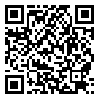BibTeX | RIS | EndNote | Medlars | ProCite | Reference Manager | RefWorks
Send citation to:
URL: http://tbj.ssu.ac.ir/article-1-700-en.html
Background: The rising expenditure of drugs is a worldwide policy concern. This research aimed to estimate drug demand function in Iranian urban population in order to help effective policy making for drug consumption rationalization.
Methods: This is a descriptive–analytical research. The required data were gathered from the published statistics of Iran Statistics Center, Iran Central Bank and Food and Medication deputy of Iran health and Medical Education Ministry at a time series of 20 years. Data analysis was carried out using E-Views software and regression analysis.
Results: The findings of research indicated that drug demand in Iranian urban populations’ drug demand function is an intrinsic variable that is influenced by households’ income, price index of drugs and the cost of physician visit. Price-elasticity, income-elasticity and cross-elasticity in relation with physician visit cost for drug demand were calculated as 0.56, 0.42 and 0.18, respectively.
Conclusion: The low estimated price- and income-elasticity of drug describes that drugs have the role of essential goods in Iranian urban population. Based on this finding, it is concluded that drug consumption rationalization and controlling policies should consider other-than-price strategies in theIranian society.
Received: 2012/01/28 | Accepted: 2012/05/5 | Published: 2013/12/16
| Rights and permissions | |
 |
This work is licensed under a Creative Commons Attribution-NonCommercial 4.0 International License. |





